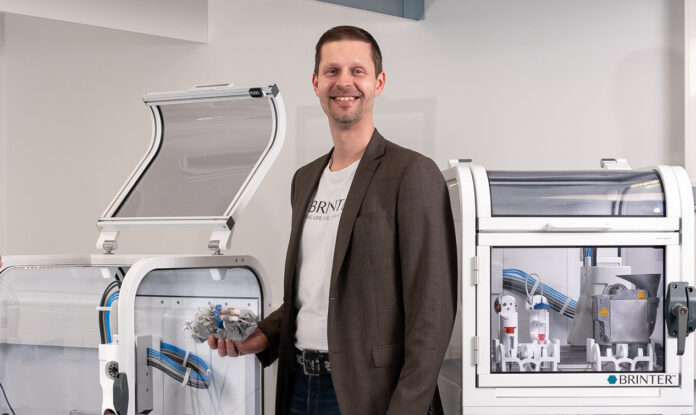The picturesque city of Turku in Finland – a place that we would have chosen for vacation is home to Brinter, a 3D bioprinting company that turned stealth mode off when it secured €1.2M to accelerate 3D printing bioscience research and manufacturing. A few months later, it was launching a new platform that would enable multi-material 3D bioprinting.
In this Q&A series, we caught up with Tomi Kalpio, CEO & founder of the company, to learn more about the birth history of his company and what makes them outstanding on a market that is continuously described as futuristic.
Tomi, there are always a variety of reasons why a company is founded. What’s yours? What inspired you to start your journey in 3D bioprinting?
I have always loved to design and build things in 3D since a little kid starting with Lego blocks. My first full-time job was as a 3D designer, and at the same time, I got familiar with 3D printing (called rapid prototyping at that time). Then it was just a cool way to do things differently. There were multiple steps between, but in 2016 we were asked to join a project called “brain printing”, and that was actually the moment when I understood that now I had found my path and passion, and it enabled me to do something that really matters with my “3D” knowledge. Combining the know-how of a multidisciplinary team to improve the quality of life or even save some in the future is why I have no problem waking up every morning and going to work.
3D Bioprinting always seems so futuristic, where does Brinter focus its activities and how would you describe the current market?
Brinter’s focus is evolving like the product itself for our customers. First, our short-term focus is to enable science and research to happen with our existing innovation platform product portfolio, including technology and materials. In the longer term, steps include spearheading applications from diagnostics and personalized medicine to printing human spare parts. The current market for our short-term focus is growing rapidly as the interest in 3D bioprinting and understanding increases. Our innovation platform can speed up development in so many different areas, such as new drugs, 3D diagnostics, tissue models, bioimplants, food, dental, etc.
Tell us more about your technology? type and main materials it processes right now?
Our today’s technology is synonym for modularity, which means that it evolves based on your needs, and there is practically no downtime when you change from one 3D bioprinting project to another. It is very user friendly from both a technology and software point of view.
Another key feature is the ability to print anything from liquid to solid materials into the same printing job mimicking, for example, human soft and hard tissues, which is very important with biological products.
And the third one is scalability, so you can scale the desktop unit to a fully automated production line to speed up the research or production.
Are your products already available for commercialization? Who are the main targets?
The first product line is already available! We have the Brinter® One and we recently announced our Brinter Core printer – our new entry-level 3D printer is 50% smaller and lower in cost.
Our customers include bio and pharmaceutical companies like Nanoform, as well as research organizations like VTT, BEST group at the University of Glasgow, Johannes Gutenberg University of Mainz, the University of Oulu, University of Turku, Åbo Akademi, Tampere University, and the University of Helsinki.
What are the biggest challenges, 3D bioprinting companies face in your opinion?
Knowhow and imagination. For example, changing the mindset to a 3D-dimensional format, including the multi-material possibilities for creating totally new types of tissue, organ or drug models.
What’s the most fascinating 3D bioprinting application you would like to see commercialize urgently?
The whole personalized medicine process where first the diagnosis is made with the help of 3D bioprinting. Then, based on the results, fully personalized drugs are 3D printed and human spare parts to replace damaged bones or organs are 3D bioprinted. Unfortunately, this will not happen in the near future, and there will be other technologies to support this personalized medicine process in the future including monitoring health in real time, enabling the “maintenance” before something breaks.
What does Brinter have in store for the rest of the year?
Growth in North American markets and new product launches. Stay tuned via our social media channels.
Remember, you can post job opportunities in the AM Industry on 3D ADEPT Media free of charge or look for a job via our job board. Make sure to follow us on our social networks and subscribe to our weekly newsletter : Facebook, Twitter, LinkedIn & Instagram ! If you want to be featured in the next issue of our digital magazine or if you hear a story that needs to be heard, make sure to send it to contact@3dadept.com






